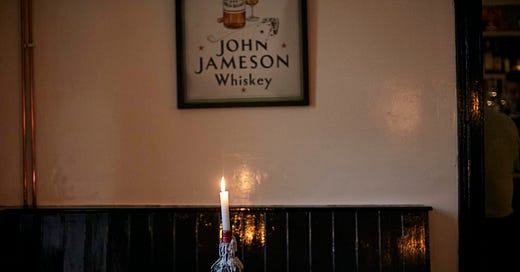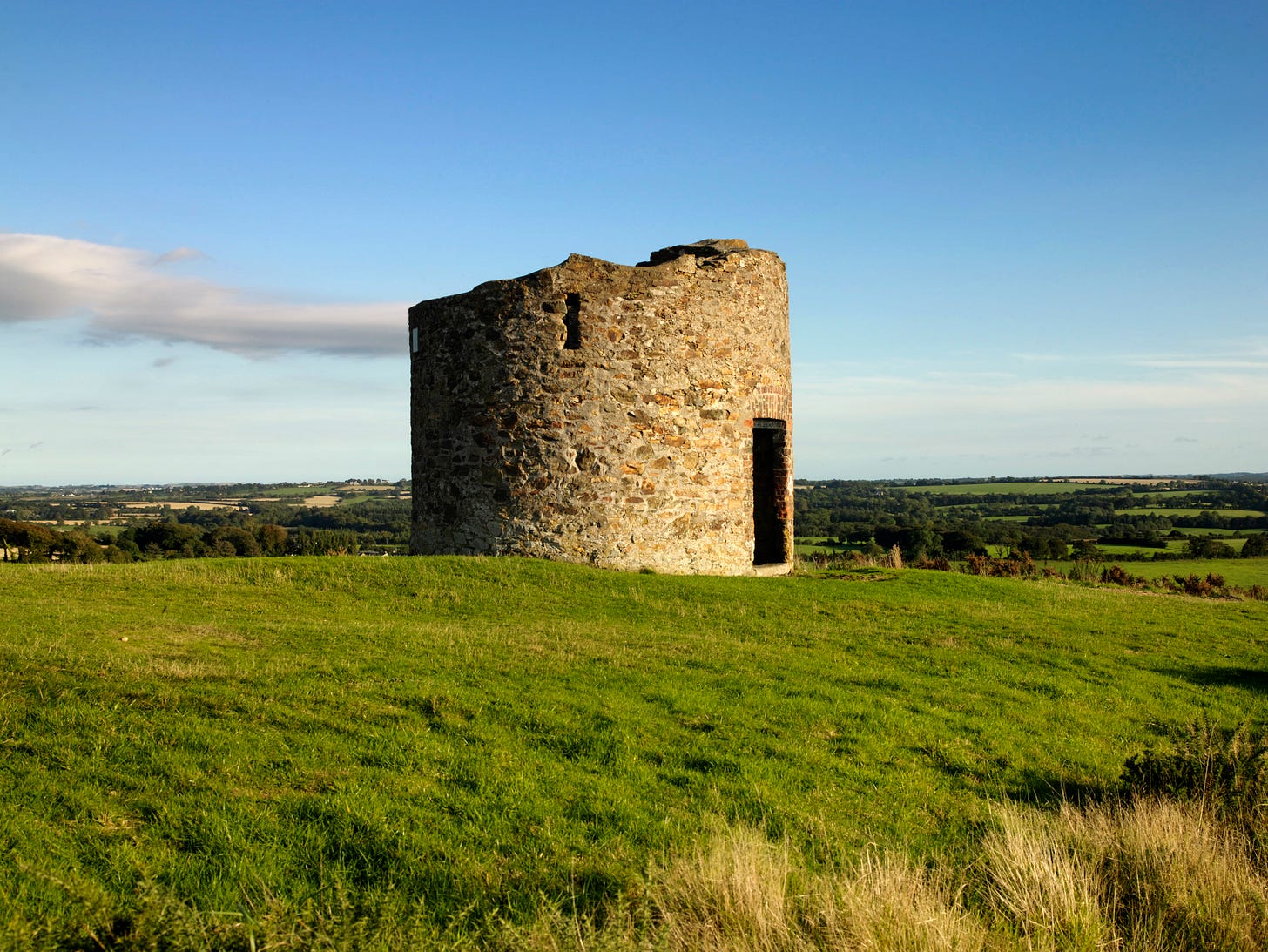My mother Maureen and I went to Ireland many years ago. I remember the southwestern journey around the island’s edge mostly in vignettes: worn limestone steps of the Blarney Castle, craftsman etching crystal in Waterford, emerald green fields plunging into the churning sea. And sheep. A hell of a lot of sheep.
But the moment that has seared deepest in my memory is one too easily found in an Irish poem or play or song. One that, if my mother machree weren’t still here to corroborate, I’d fear I simply dreamt. It was a night out at a pub.
The town or village, I can’t remember. Killarney, maybe? Somewhere near the Cliffs of Moher? I do remember the low ceiling, dark wooden floors, the fiddler, the pints, and we drunkards singing with joyful abandon. The room was musty and candle-lit. The floors were old and soft. I felt grounded by some ethereal tether to my maternal roots and the heady intoxication of being somewhere so utterly non-American yet so very Irish. I could’ve stayed in that fever-dream of a pub forever.
Home in New York, most Irish pubs are found in the soulless squalor of Midtown Manhattan or terribly far afield in Woodside, Queens, where most Irish in the city live today. Could I find something to match my Jameson-addled memory?
In the mid-nineteenth century—when my ancestors first arrived in the U.S. from County Cork—more than 25 percent the city’s population was Irish. Today, it’s down to just five percent. Slightly north of my home in Cobble Hill is a magical and minuscule neighborhood, curiously called Vinegar Hill. (I’d always assumed it once housed vinegar manufacturing plants.) Its Belgian-block streets are lined with Greek Revival townhouses just aching for an artist to set up an easel and sketch them.
But this tiny corner of the city was named after Vinegar Hill in County Wexford, Ireland, a perch that was crucial during an uprising against the British in 1798. A savvy 19th-century developer thought the name might lure recent Irish immigrants to the neighborhood. He was right. Vinegar Hill, Brooklyn became so lousy with Irish, people just called it Irishtown.
Today, it’s a well-heeled historic district with little-to-no Irish culture. Vinegar Hill House is a charming 40-seat bar and restaurant with a new-American menu. You could bend it to your historic fantasies with a clever order of beer with lamb ragù, Yukon potatoes, and Guinness chocolate cake. But there’ll be no rowdiness or fiddler found there. And it’s far too sun-dappled to hold much mystery.
On the other side of the river one thoroughly Irish spot has survived, even as that neighborhood, too, has changed. McSorley’s on East 7th Street swung open its saloon doors in 1854, right around when developers were pitching the new “Vinegar Hill” to recent arrivals. For more than 170 years, the pub has served patrons from Abraham Lincoln to John Lennon to, well, me, as recently as this past Wednesday.
If I didn’t know better, I’d have thought my waiter was acting the part of a gruff old barkeep. White-haired and stout, he waddled around the old floorboards, holding seven or eight pints in each hand. He was unbothered by the foam spilling all over the sawdust-covered floors.
The beers at McSorley’s come in two options: light and dark. Nothing special, very drinkable. The food menu is cheap and good. I got a liverwurst with raw white onions on rye for six bucks. Delicious. Seating is communal and our waiter showed a woman, appropriately named Shannon, to our corner table. When we were done, I asked if we should pay him (the other unspoken alternative was to pay at the bar). He stopped dead in the middle of the room, threw his arms wide open and said, “Well, I’m the only one here!”
On our way out the door, a different waiter (turns out he wasn’t the only one there) and customer were speaking in such thick Irish accents I couldn’t make out the conversation at all. The place was undoubtedly authentic, but it wasn’t like my fantasy pub at all.
Heading home along 2nd Avenue I passed The Grey Mare, which, despite its equestrian name and hand-painted sign, is not an Irish bar. Two older white men were picking through trash and mumbling to each other. One looked up. “What’s that?! The grey mar-AY?” one asked. “No! The grey MAY-er,” he corrected his buddy. “Oh, everyone wants to be fucking Irish now!”
My downtown Manhattan experience was certainly its own brand of New York Irish-ness, but far from a mirror of what I experienced on the old sod. What western Brooklyn’s Vinegar Hill offers in old-world quiet and beauty, it lacks in any real touch of the Emerald Isle.
In Killarney or Kilkenny or Killorglin or wherever we were long ago, if I experienced that sublime moment at all, a traveler’s perfect memory persists. And maybe that’s all we can ever expect from our journeys. Those exquisite, painted scenes that buoy us across our day-to-day lives in the reality of home.








